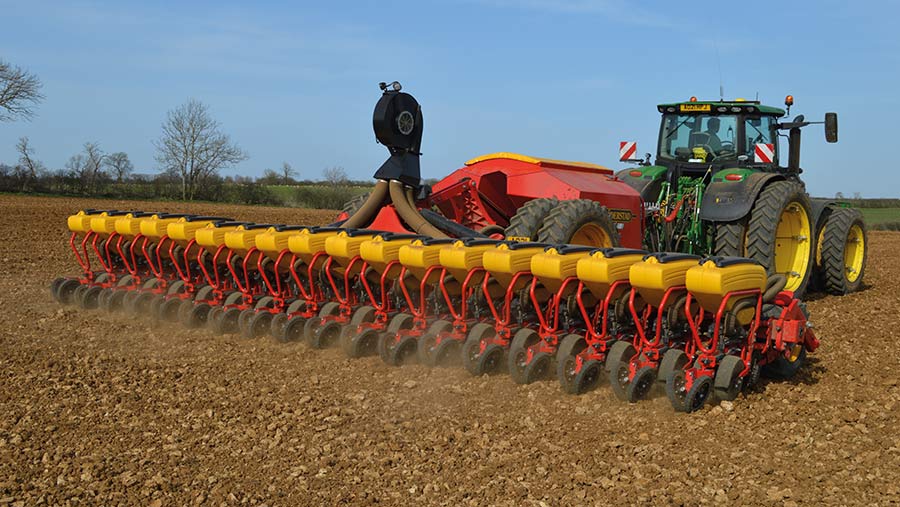Aginflation shows first dip in over three years
 © MAG/David Jones
© MAG/David Jones Latest aginflation figures from buying group AF have revealed the first signs of a downturn in farm input costs in more than three years, with a 2.55% fall in its overall index for the six months to the end of March 2023.
Fertiliser and fuel costs have led the way, falling by 30% and 23% respectively – and there have been small falls in the price of machinery, contract hire, and animal feed and medicine.
But agrochemicals are still costing 13% more than six months ago, while rent and labour are both 7% more expensive.
See also: What aginflation looked like last autumn
While the overall downturn is described as “very welcome”, AF chief executive David Horton-Fawkes said it was too variable across farm types to give much cause for relief.
For example, while dairy farms have benefited from a 4.8% drops in input costs over the past six months, and beef and lamb producers a 2.7% dip, cereal and oilseed rape growers have faced a more static situation, and sugar beet growers are looking at a 14% cost rise.
As well as lower fuel and fertiliser costs, livestock and dairy farmers are paying a bit less for feed (-1.7% according to the index).
AF head of livestock inputs Kristian Dunham, said: “Already, this year, we have seen substantial reductions in feed cereals. However, proteins such as soya remain expensive.
“This all means that compound and blended feed prices haven’t fallen as much as wheat markets may suggest.”
Pesticides
Arable farmers are also being hit by continuing hikes in the cost of crop protection products and seed – up 13% and 9% respectively.
“It is alarming that crop protection prices are continuing to rise, and we are encouraging our members to look beyond brand names and focus on active ingredients,” said Mr Horton-Fawkes.
“We’ve been tracking aginflation for 16 years and we’ve seen this lag before.
“If previous patterns continue, we should see these prices begin to ease next year as the reduced cost of production begins to impact.”
Mr Horton-Fawkes also pointed to the falling value of farm sales in some sectors – both dairy and grain prices have been sliding this year.
“The significant drop in fertiliser prices is, of course, welcome, but many farmers bought their fertiliser when prices were still sky high and now output values are falling, so this could be a very difficult harvest for farmers.”
